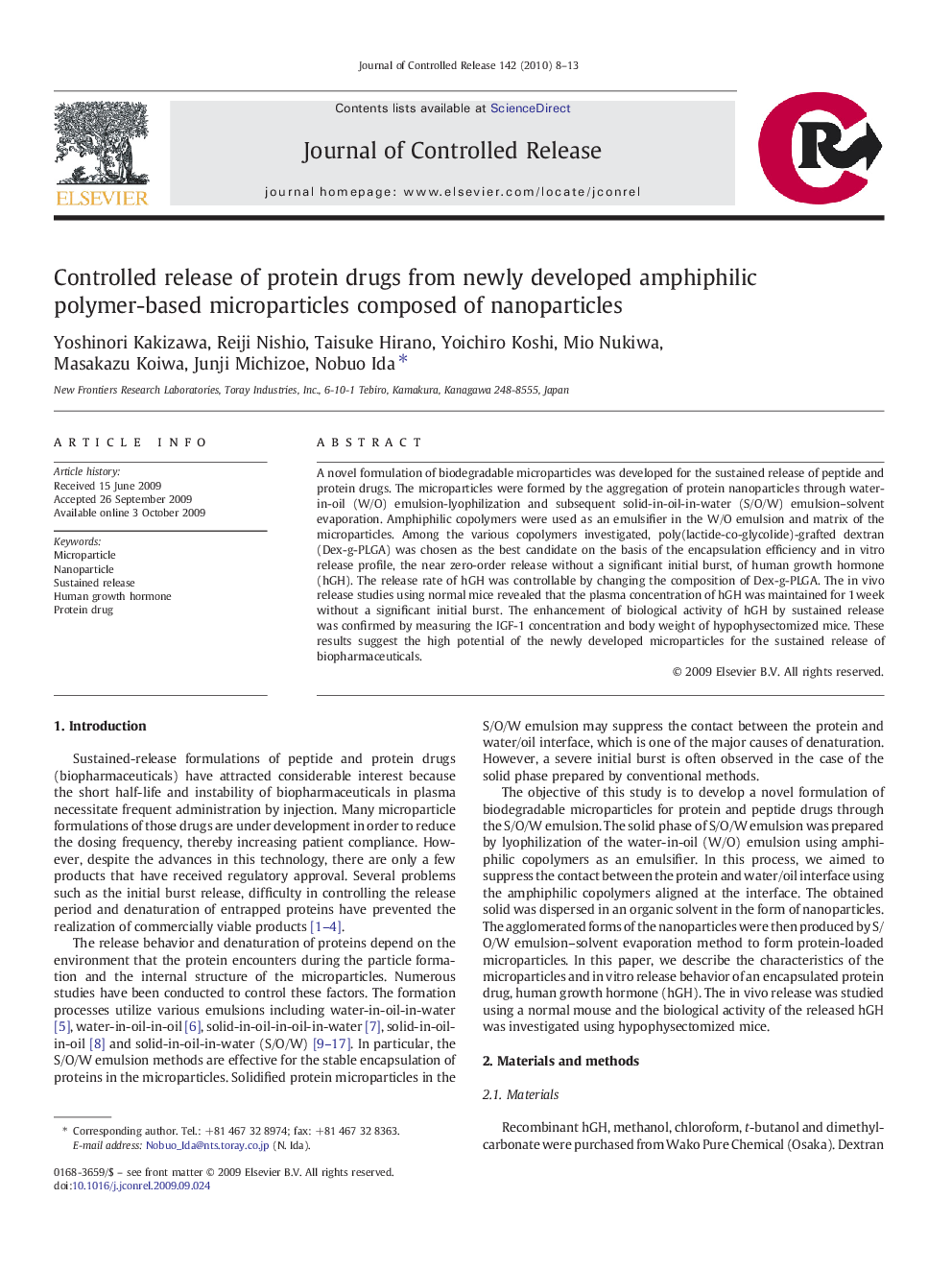| Article ID | Journal | Published Year | Pages | File Type |
|---|---|---|---|---|
| 1425850 | Journal of Controlled Release | 2010 | 6 Pages |
A novel formulation of biodegradable microparticles was developed for the sustained release of peptide and protein drugs. The microparticles were formed by the aggregation of protein nanoparticles through water-in-oil (W/O) emulsion-lyophilization and subsequent solid-in-oil-in-water (S/O/W) emulsion–solvent evaporation. Amphiphilic copolymers were used as an emulsifier in the W/O emulsion and matrix of the microparticles. Among the various copolymers investigated, poly(lactide-co-glycolide)-grafted dextran (Dex-g-PLGA) was chosen as the best candidate on the basis of the encapsulation efficiency and in vitro release profile, the near zero-order release without a significant initial burst, of human growth hormone (hGH). The release rate of hGH was controllable by changing the composition of Dex-g-PLGA. The in vivo release studies using normal mice revealed that the plasma concentration of hGH was maintained for 1 week without a significant initial burst. The enhancement of biological activity of hGH by sustained release was confirmed by measuring the IGF-1 concentration and body weight of hypophysectomized mice. These results suggest the high potential of the newly developed microparticles for the sustained release of biopharmaceuticals.
Graphical abstractFigure optionsDownload full-size imageDownload as PowerPoint slide
